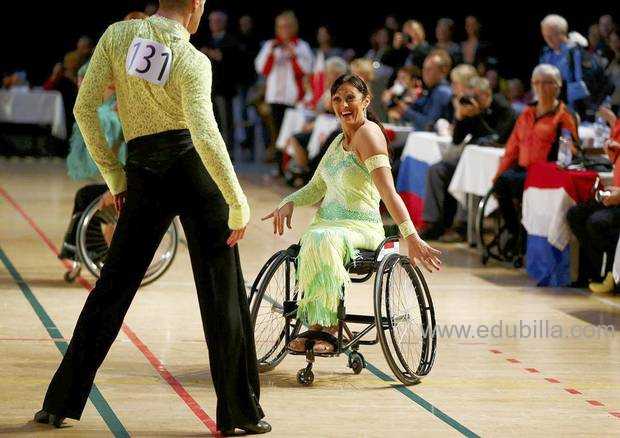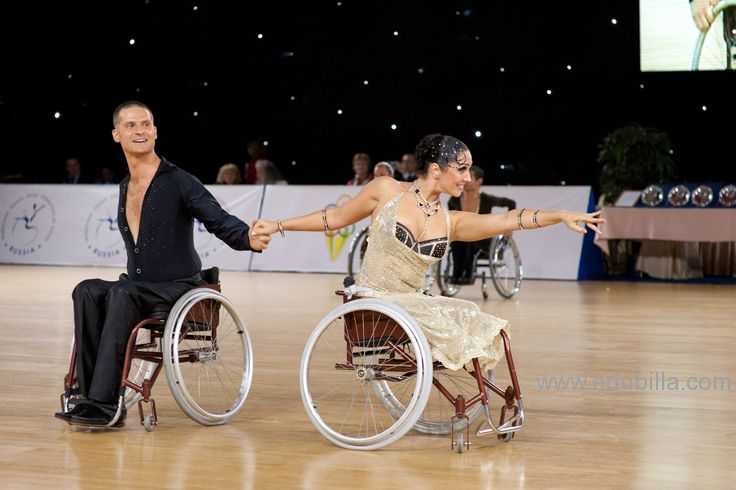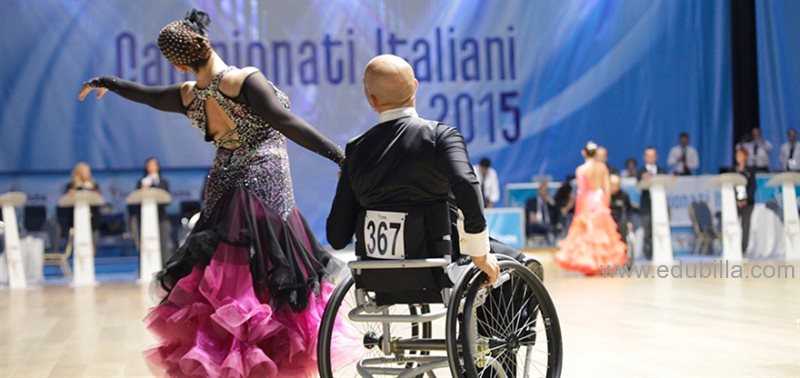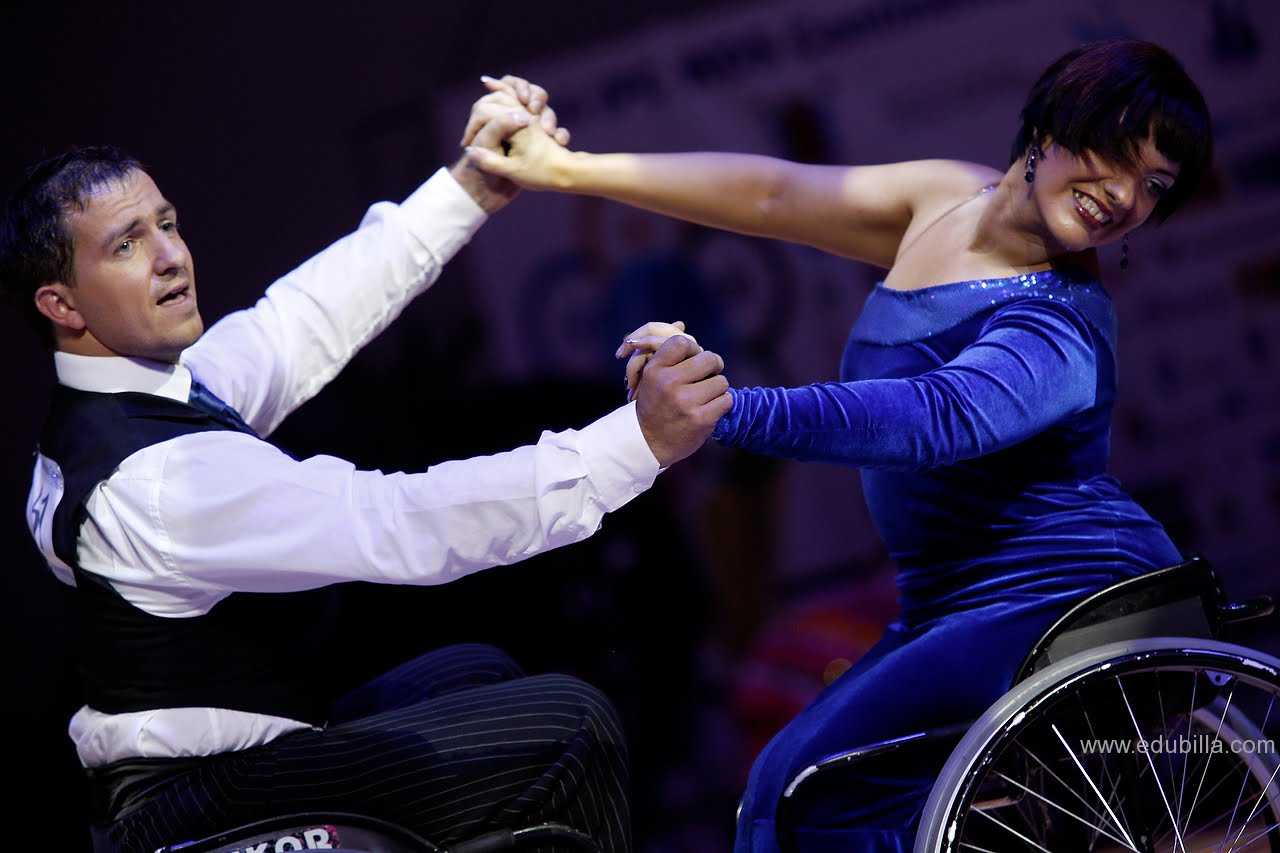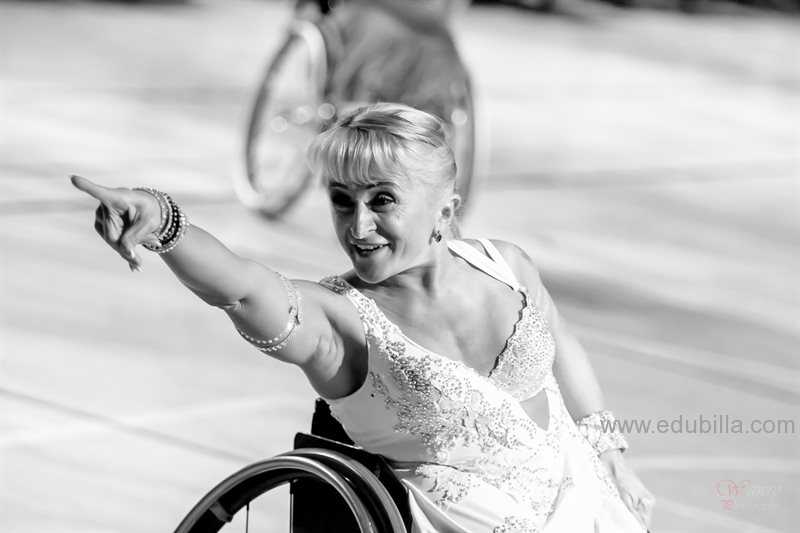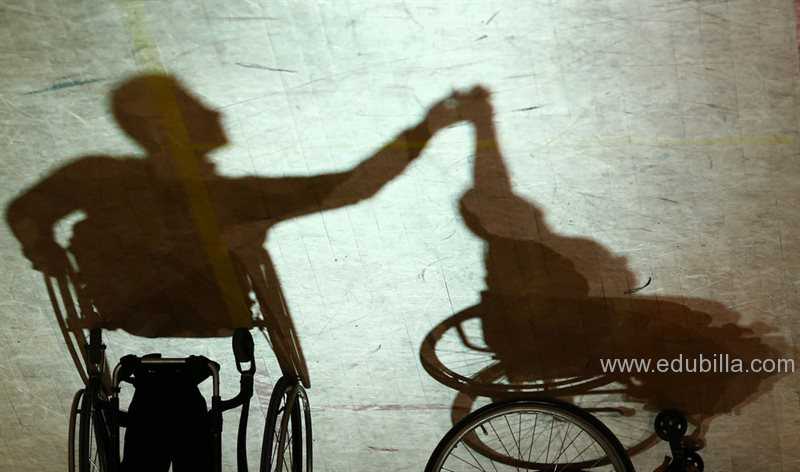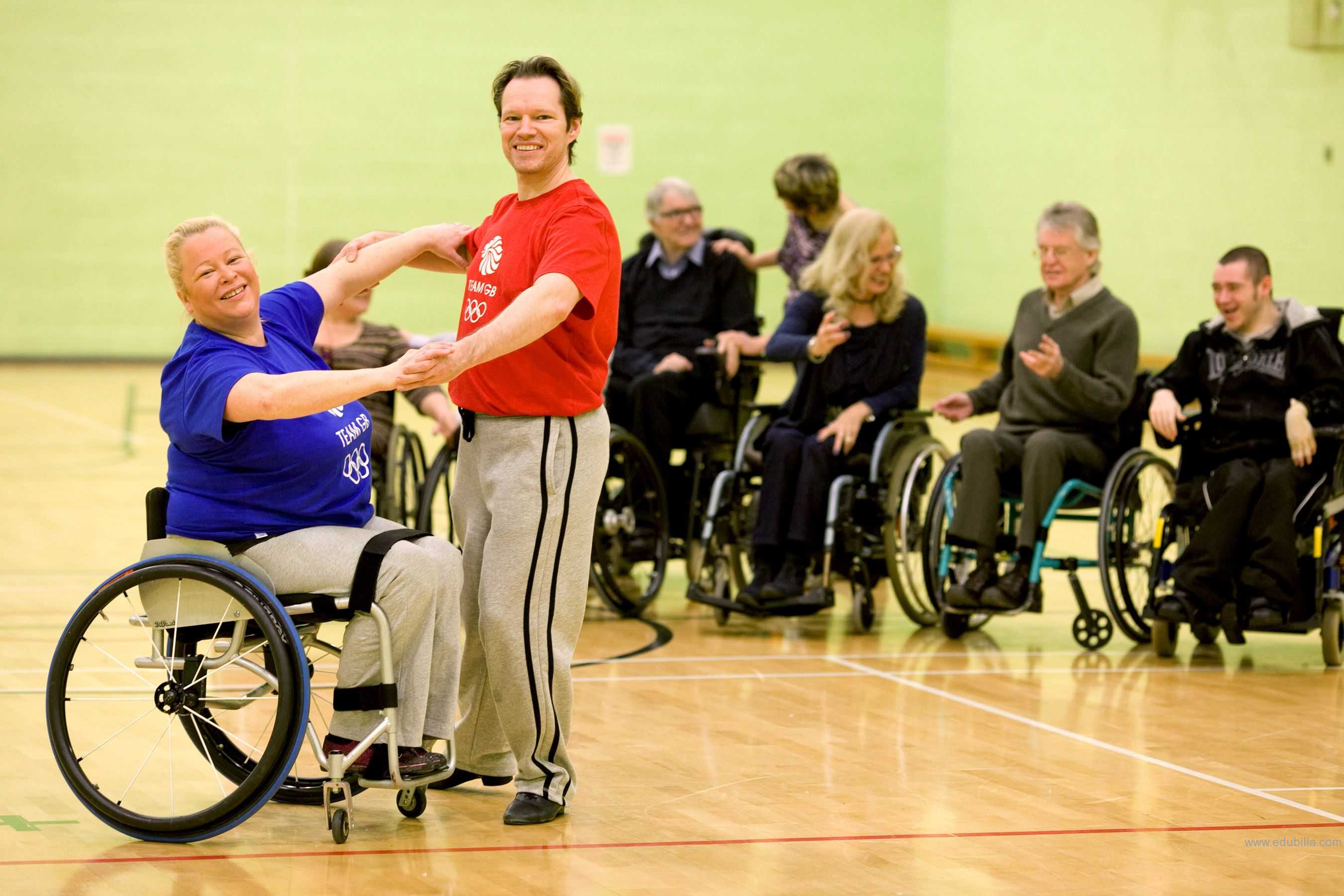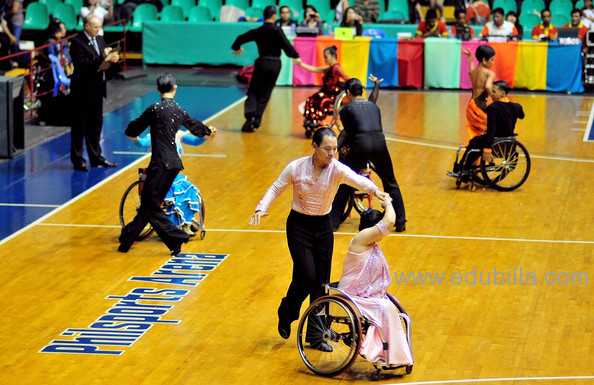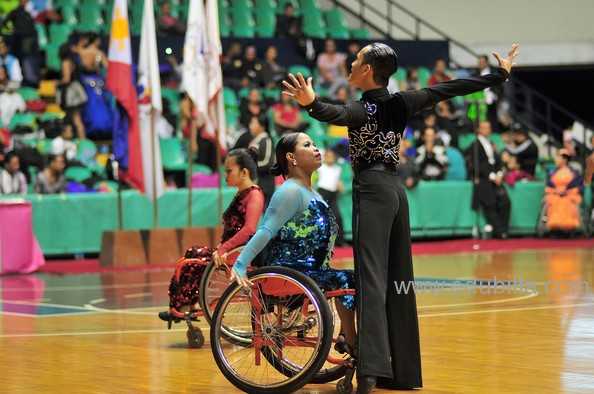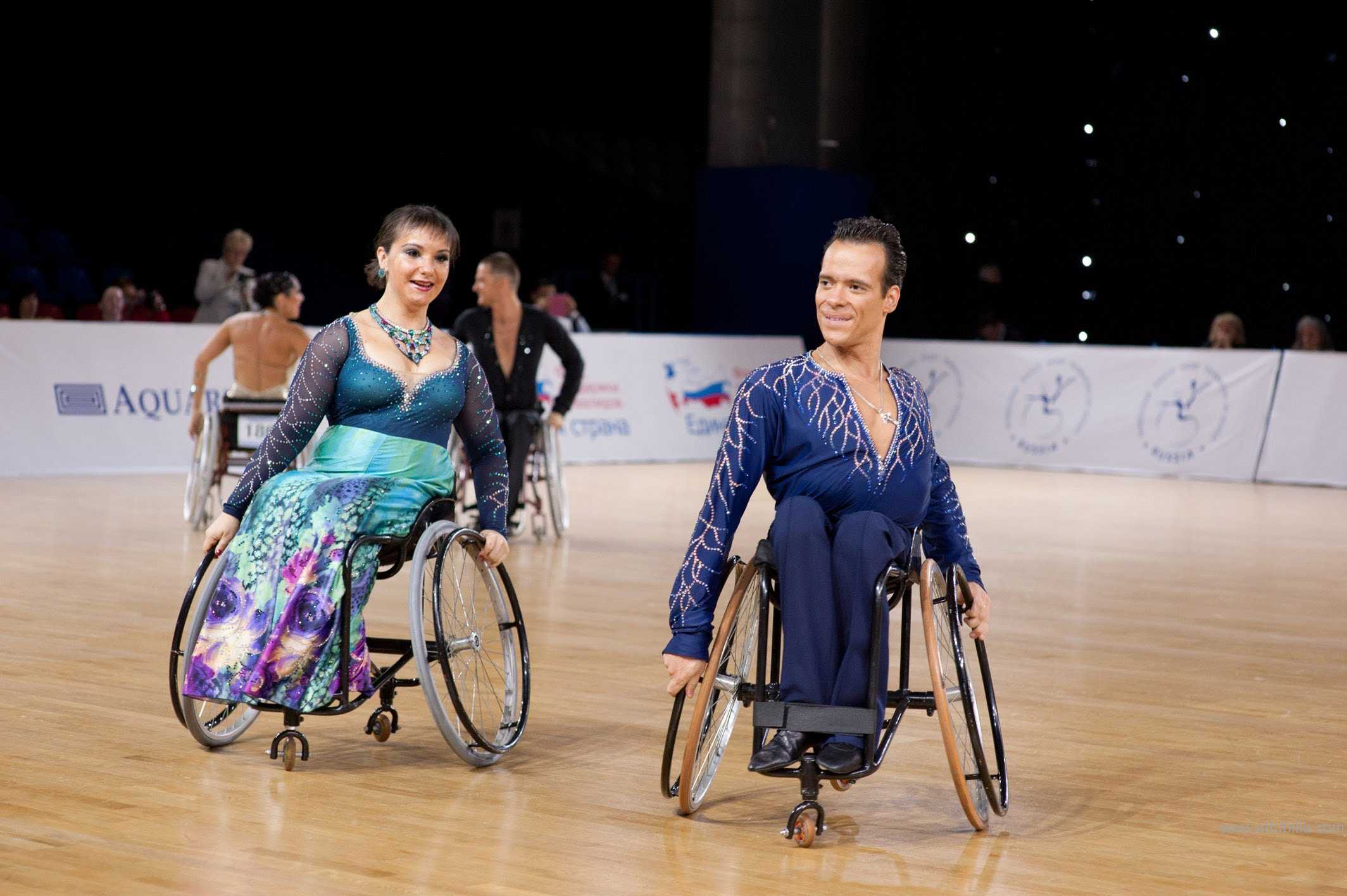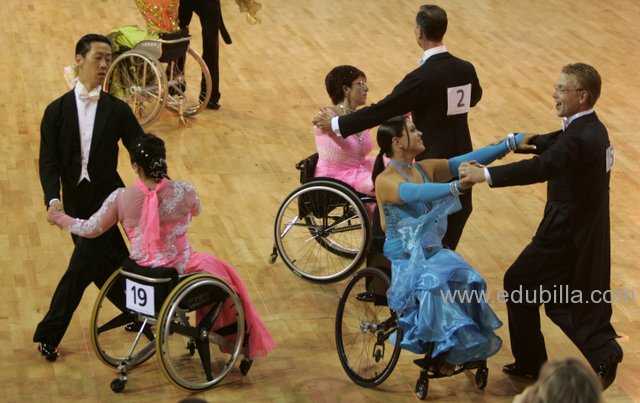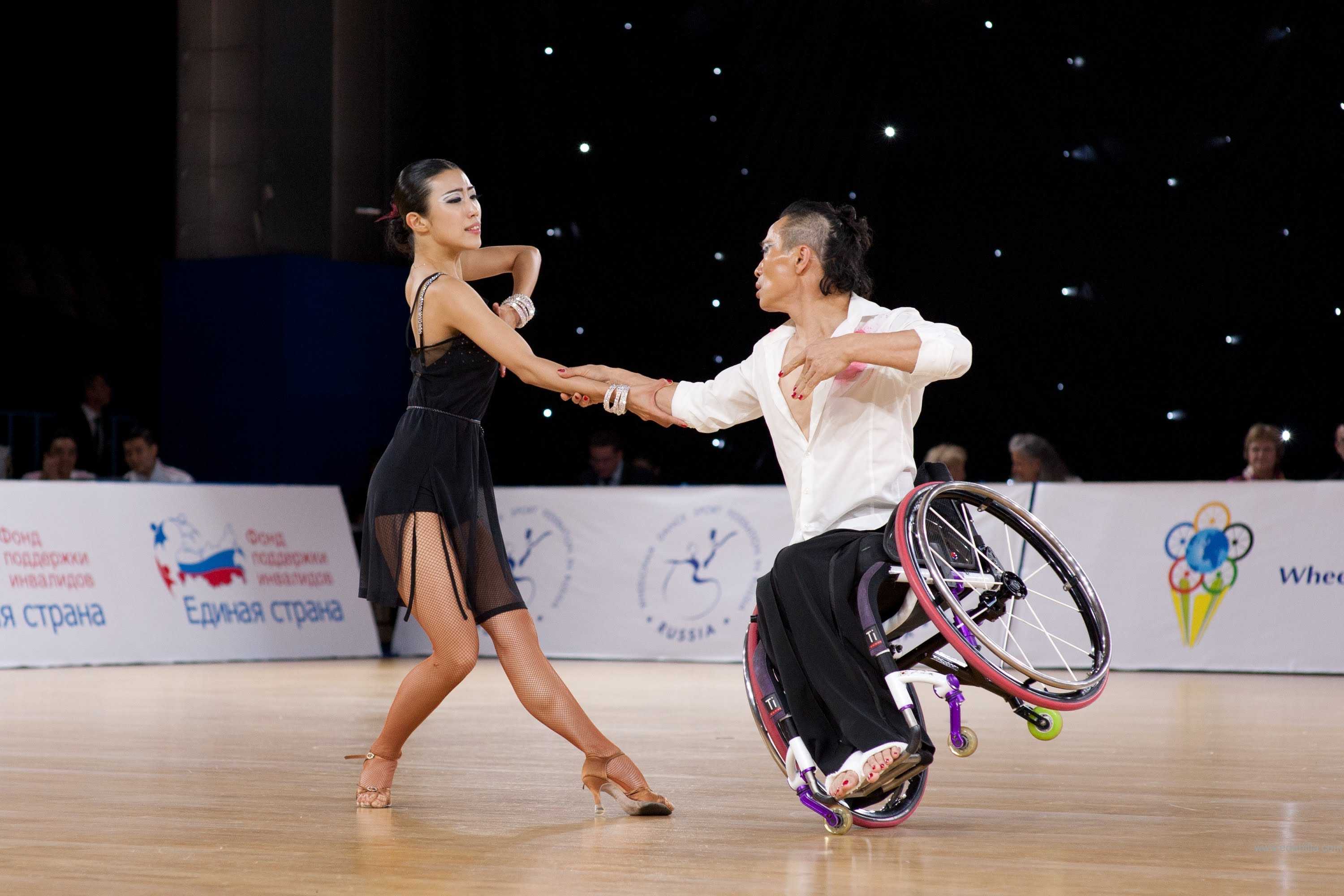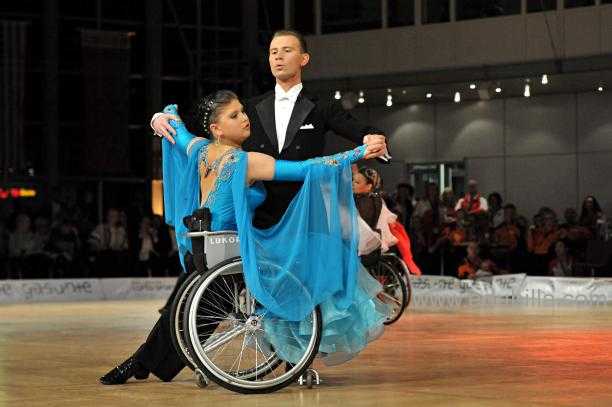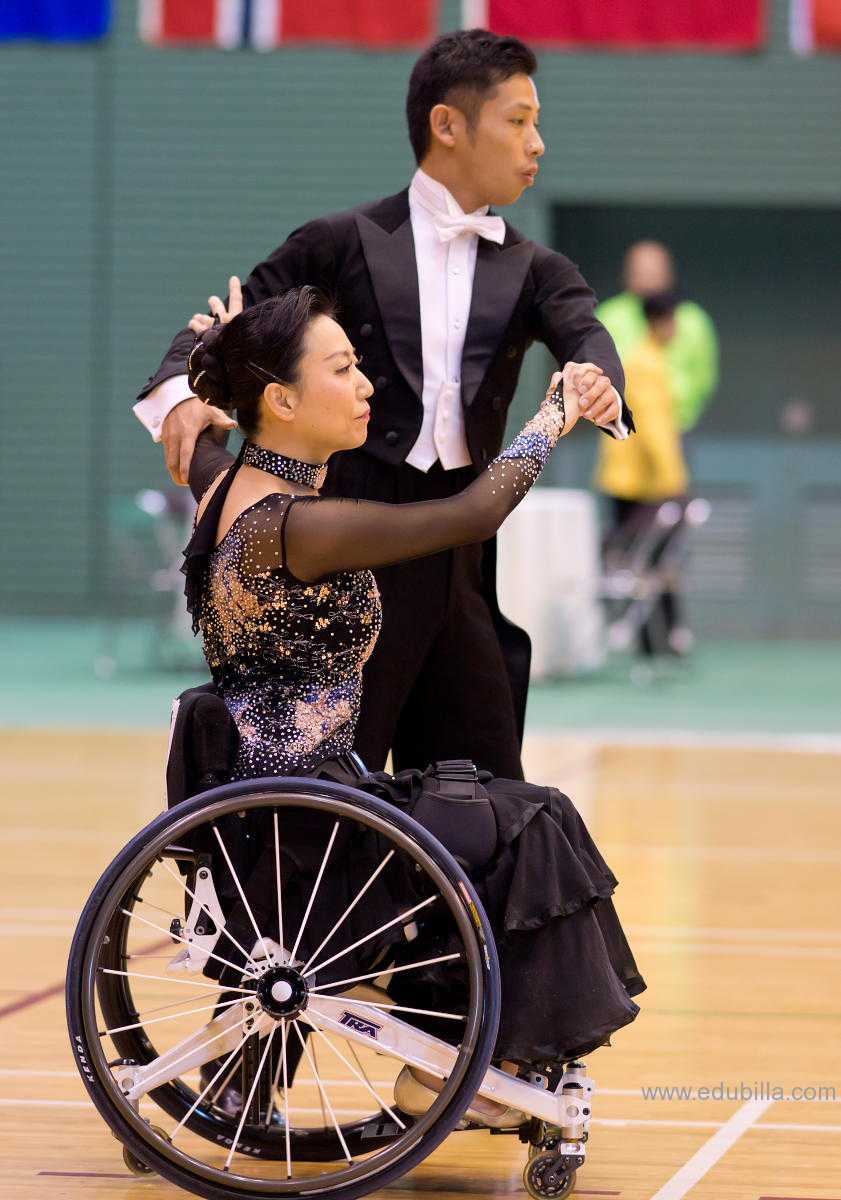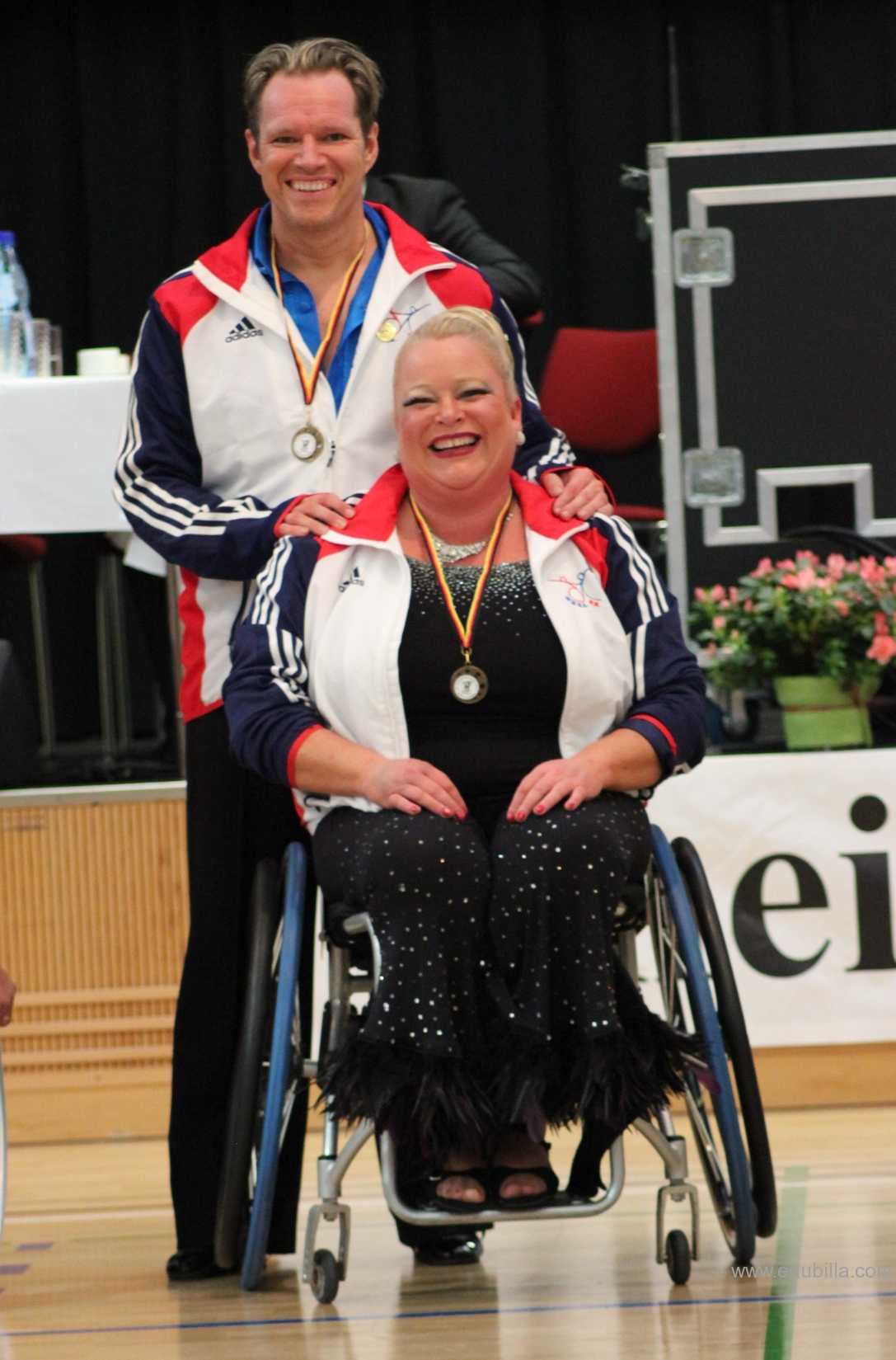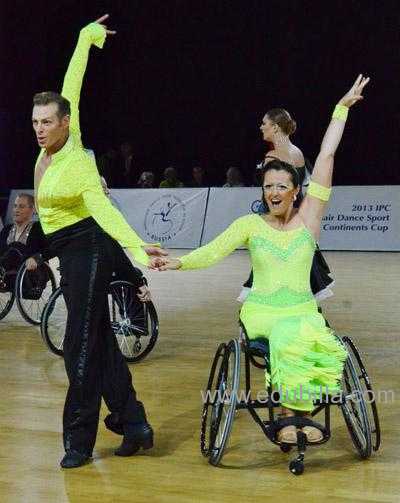
Overview Of Wheelchair DanceSport
Wheelchair DanceSport is a partner dance competition and Dancesport where at least one of the dancers is in a wheelchair.
Sport:
Wheelchair couple dances are for two wheelchair users or for one wheelchair user with a "standing" partner and include standard dances such as waltz, tango, Viennese waltz, slow foxtrot and quickstep and Latin American dances such as samba, cha-cha-cha, rumba, paso doble and jive. There are also formation dances for four, six or eight dancers
Social:
Wheelchair dancing is a popular social and recreational activity, with participants in over 40 countries.The physical benefits of wheelchair dancing include the maintenance of physical balance, flexibility, range of motion, coordination and improved respiratory control. The psychological effects of ballroom dancing are social interaction and the development of relationships. For social dancers, it is an opportunity to engage in a fun and a friendly event with others. For competitors, it assists in the development of fair play, sportsmanship and communication skills. Wheelchair dancing is an activity that integrates the wheelchair user and able-bodied person.
Courses:
In February, 2008 the University of Delaware Collegiate DanceWheels Program was created to instruct students in wheelchair dancing. This is the first accredited course of its kind in the United States. The program was developed in conjunction with the American DanceWheels Foundation through a grant from the Christopher and Dana Reeve Foundation.
Wheelchair Dance Sport Association:
The WDSA (UK) was established in 2006 as the UK National Governing Body for wheelchair dance sport and wheelchair dancing within the UK, for those who would otherwise be excluded from dancing.
The aim of the WDSA (UK) is to promote and develop wheelchair dancing as a sport and leisure activity across the country, to raise the standard of instruction and competition in the UK and internationally at all levels. As well as making dance, in whatever form, FUN, exciting and something that individuals who are part of this association and who take part in wheelchair dance are proud to say “I can do that”.
Wheelchair Dance Sport for Children:
Wheelchair Dance Sport can be also beneficial to very young people with cerebral palsy and other disabilities.
Wheelchair ballroom dancing is a great strategy for rehabilitation because it involves movements of almost the entire body, promotes gender self-awareness, and helps improve memory.
Wheelchair Dance Sport negates boundaries between worlds of healthy and disabled people. Collaboration with a healthy partner is not only achievable but also very rewarding.
Game Rules
- A dance couple must be comprised of a male and a female partner, one of which must be a Wheelchair Dance Sport dance couple. wheelchair user with at least a minimal disability that makes walking impossible.
- Participants with disabilities in the lower parts of their bodies such as amputation, paralysis, cerebral palsy, and leg shortening (at least 7 cm) are eligible for competition.
- Participants are expected to have normal upper-body functions.
- There are two functional classes based on ability to maneuver a wheelchair, trunk rotation, and arm function.
- In all rounds of International Wheelchair Dance Sport Competitions, the music is played for a minimum of 1 1/2 minutes for Waltz, Tango, Slow Foxtrot, Quickstep, Samba, Cha-Cha-Cha, Rumba and Paso Doble. The time for the Viennese Waltz and Jive is 1 minute. In the qualifying rounds, the same music must be played for different heats.
- International Wheelchair Dance Sport Competitions are comprised of at least two qualifying rounds to allow couples the opportunity of dancing twice. The number of rounds is determined by the number of participants.
- At least 50% of participating couples are recalled to the next round, except for the final.
- Winners are selected by a panel of judges from varying countries.
Equipments Need For Wheelchair DanceSport
- The surface of the dance floor must be a minimum of 250 square metres with no side of the floor less than 10m in length, and 350 square meters for Championships.
- Participants have the option of using electric wheelchairs if they need to.
History Of Wheelchair DanceSport
1968-Wheelchair user Els-Britt Larsson was one of the pioneers of wheelchair dancing when it originated in her native Sweden in 1968 for recreational and rehabilitation purposes.
1975-From there the sport’s popularity grew and in 1975 the first competition was organised in Vasteras, Sweden involving 30 couples.
1977-Two years later in 1977 Sweden staged the first international competition and several regional and international competitions soon followed.
1984-In 1984 Munich, Germany staged the first Rock’n’Roll European Championship for wheelchair dancers and the following year the Netherlands hosted the first unofficial European Championships in Latin and Standard.
1998-The first World Championships took place in Japan in 1998, the same year the sport came under the governance and management of the International Paralympic Committee.
2006-At the 2006 World Championships in Papendal, the Netherlands, duo-dance was presented for the first time in two Standard and three Latin dances.
2014-In 2014 singles and freestyle/showdance (singles and combi) were introduced as the part of the official programme.
2013-The IPC Wheelchair Dance World Championships are held every two years and were last staged in 2013 in Tokyo, Japan.
Origin Of Wheelchair DanceSport
Wheelchair dancing started according to the IPC when it was practiced for recreational and rehabilitation purposes, Wheelchair Dancing originated in Sweden in 1968. Els-Britt Larsson, a wheelchair user herself who worked for the Swedish Handicap-Federation, was one of the pioneers of this fascinating sport.
First Championships:
- In 1977, the first international competition in Wheelchair Dance Sport took place in Sweden. After several regional and international competitions, the first World Championships were organized in Japan in 1998. The same year, Wheelchair Dance Sport became a Sport under the Governance and Management Authority of the International Paralympic Committee (IPC), but is not part of the Paralympic Program today.
- Munich, Germany, organized the first Rock’n Roll European Championship in 1984, for wheelchair dancers. In 1985, the first unofficial European Championships in Latin and Standard were organized in the Netherlands. The first World Championships was held in Japan in 1998. At the 2006 IPC Wheelchair Dance Sport World Championships, which took place in Papendal, the Netherlands, duo-dance was presented for the first time in two Standard and three Latin dances.
- The 2008 IPC Wheelchair Dance Sport World Championships was organised in Minsk, Belarus in October 2008.
First Asian Championships:
IPC Wheelchair Dance Sport has launched a call for hosts for the first Asian Championships in the sport’s history, as well as for the next European Championships, both scheduled to take place in 2016.
First IPC World Cup:
Around 130 dancers from nearly 20 countries are set to descend on St. Petersburg, Russia, from Saturday (5 September), for the first IPC Wheelchair Dance Sport World Cup.
The competition, which has been known as the Continents Cup in previous seasons, is the penultimate event before the 2015 IPC Wheelchair Dance Sport World Championships take place in Rome, Italy, in November.
Governing Bodies
World DanceSport Federation (WDSF):
The World DanceSport Federation (WDSF), formerly the International DanceSport Federation (IDSF), is the international governing body of dancesport and Wheelchair DanceSport, as recognised by the International Olympic Committee (IOC) and the International Paralympic Committee (IPC).
Originally founded in 1957 as the International Council of Amateur Dancers (ICAD), it took up the name IDSF in 1990. In 2011, it was renamed to WDSF to emphasise the global character of the organization.
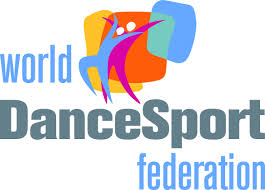
History of WDSF:
1909 First unofficial ballroom championships in Paris
1957 ICAD founded in Wiesbaden on 12 May 1957
1960 First television broadcast of Dancesport
1990 Name changed to IDSF
1992 Becomes a member of the General Association of International Sports Federations (GASIF) (now SportAccord)
1995 World Rock & Roll Confederation (WRRC) joins IDSF as an Associate Member
1997 Recognised by the IOC
2001 Subscribes to World Anti-Doping Code
2004 International Dance Organisation (IDO) joins IDSF as an Associate Member
2007 Presentation of the VISION 2012 project to the IDSF General Meeting
2008 IDSF and the International Paralympic Committee "enter into a collaboration agreement to promote Wheelchair DanceSport jointly"
2008 United Country and Western Dance Council (UCWDC) joins IDSF as an Associate Member
2008 IDSF General Meeting delegates the Praesidium to pursue a restructure of the federation under VISION 2012
2010 Launches the IDSF Professional Division
2011 Changes name to WDSF on 19 June
Statutory Objects:
- As per its Statutes, WDSF pursues the following objectives.
- To advance, promote, and protect the character, status and interests of DanceSport worldwide.
- To develop standardised rules governing international competitions.
- To author and enforce Codes of Conduct and Standards of Ethics for both athletes and officials.
- To advise and assist the WDSF National Member Bodies and the Associate Members in the administration of DanceSport in their countries and organisations.
- To represent DanceSport in the Olympic Movement.
WDSF Structure:
Democratic and efficient describe the style of governance and the structure of WDSF. The WDSF General Meeting elects the 12-member Presidium and delegates the management to the latter. On the operational level, the Managing Committee – made up of the President, First Vice President, Treasurer, Secretary General and Sports Director – tends to the day-to-day running of the federation. The committee is supported in its task by the standing commissions, by advisers and consultants, and by the administration.
To Visit WDSF Click Here.
Awards Related To Wheelchair DanceSport
The Media Access Awards, a special awards show honoring members of the entertainment and broadcast industries for their efforts in promoting awareness of the disability experience, accessibility for people with disabilities, and the accurate depiction of characters with disabilities.The range of disabilities was very wide and broad: wheelchair-users, prosthetic and bionic legs, amputated arms and hands, down syndrome, autism, blind, deaf, little people... They mentioned that 56 million Americans (20%) live with a disability, yet this demographic is represented by an estimated 2% of characters on television, and this is what the Media Access Awards community strives to change.
Sample Documents Of Wheelchair DanceSport
-Muhammad Ali




